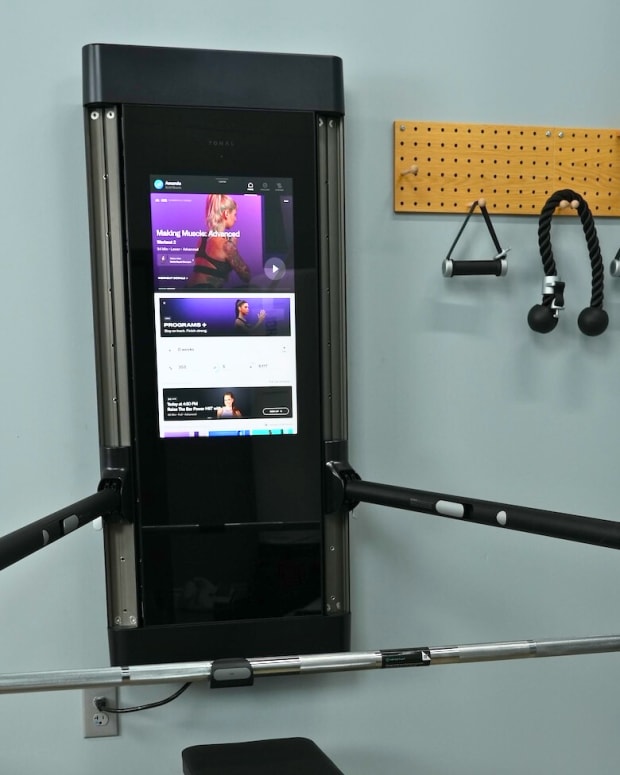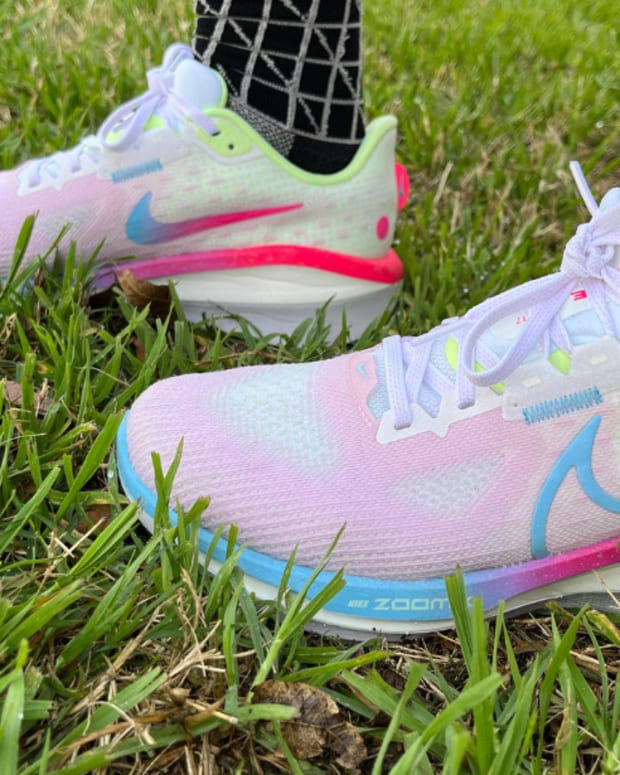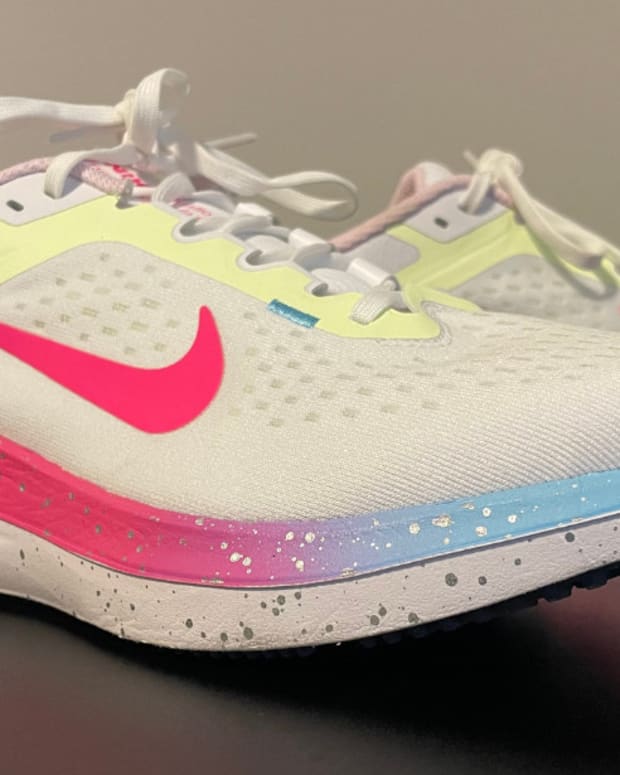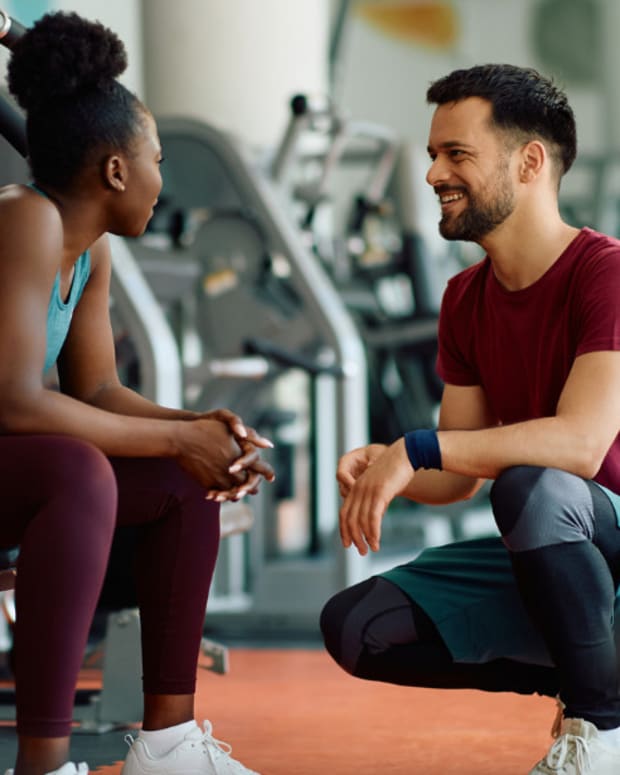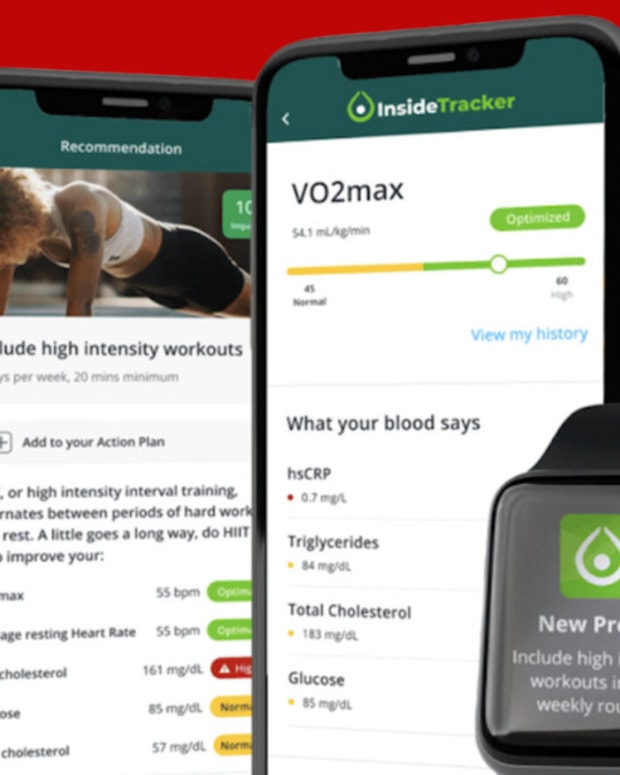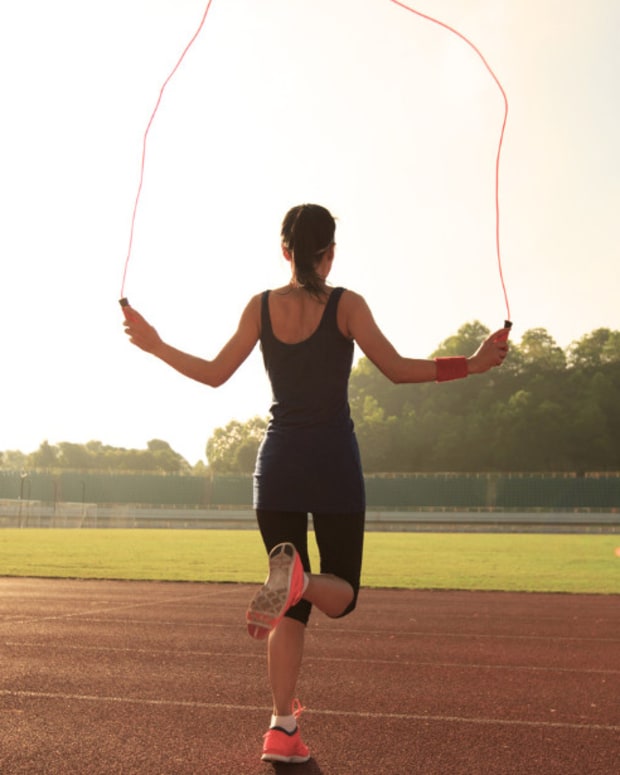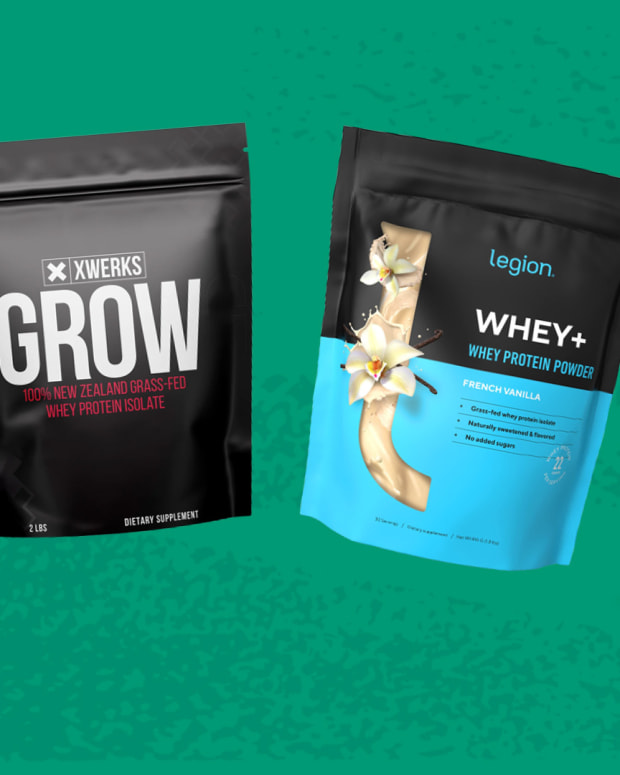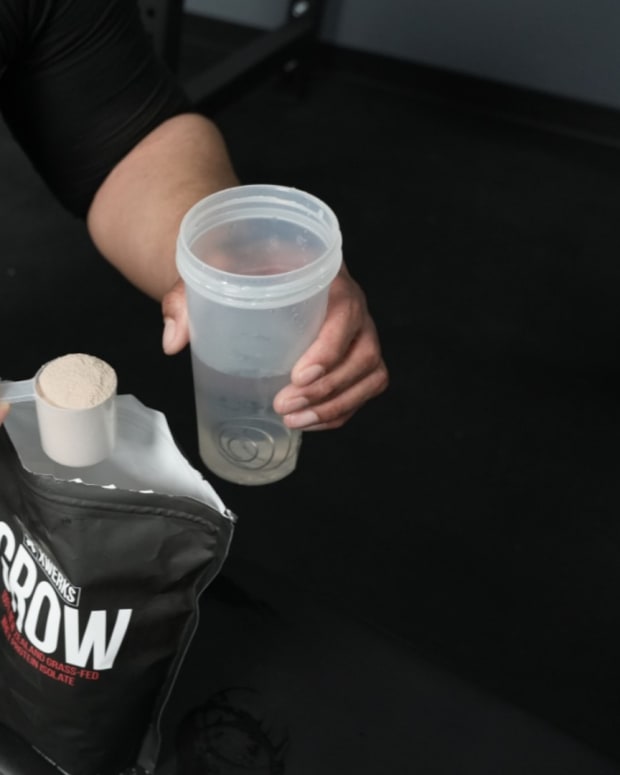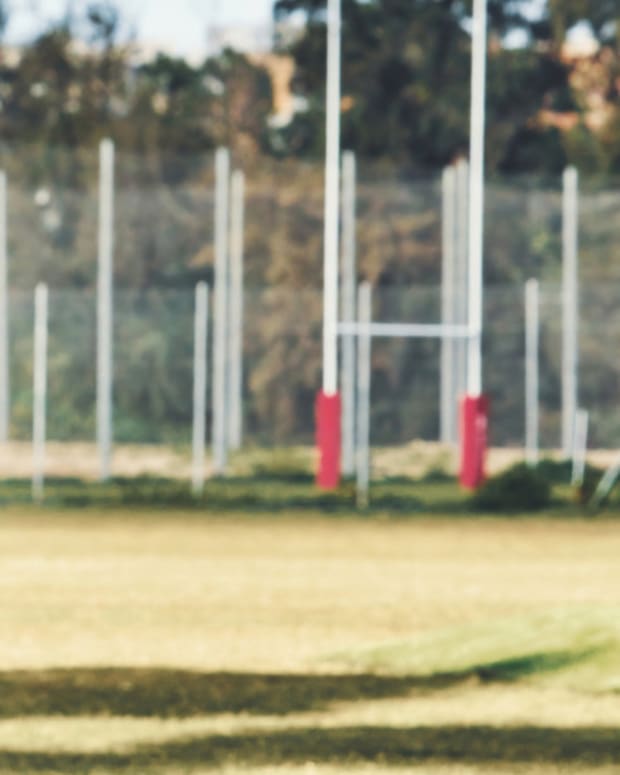The products featured in this article have been independently reviewed. When you buy something through the retail links on this page, we may earn commission at no cost to you, the reader. Sports Illustrated editorial staff are not involved in the creation of this content. Learn more here.
Avid runners know how important a good running shoe is. From arch support to comfort, to even design and durability, the way a running shoe is constructed can play a huge role in the quality of your workouts. After all, it’s quite obvious when your running shoes just aren’t right—maybe the fit is too tight, or your shins are more achy than usual, or your shoes only last for a few weeks of workouts before falling apart. Whatever your reason may be, buying a pair of running shoes made by a reputable brand can save you money and even prevent injury in the long run.
Still, despite there being dozens of running shoe brands that you can choose from, some simply make higher-quality footwear than others—and it can be tough sifting through the many choices without knowing which brands truly rank supreme. If you’re in the market for new running shoes, we’ve put together a guide with our favorite running shoe brands that stand by their reputation and offer excellent footwear built to last. Keep reading to discover our best running shoe brands, their top-selling models and how to choose a running shoe brand that’s right for your needs.
Our Picks for the Best Running Shoe Brands for 2024:
Allbirds
Key features:
- Most popular models: Allbirds Wool Runners, Allbirds Tree Runners and Allbirds Tree Dasher 2
- Unique technologies: FSC-certified Tencel, SweetFoam, ZQ Merino wool
- Best for: Casual jogging and cross-training
While Allbirds may not be as familiar to some as Nike or adidas, this is a running shoe brand you’ll want to take note of. Offering numerous budget-friendly running shoes, runners gravitate towards Allbirds for their fair price points and comfortable footwear. Each midsole is SweetFoam—a patented foam crafted from sugarcane-based EVA. This unique material is both soft and sustainable. A favorite amongst Allbirds shoppers is the Allbirds Wool Runners, a running shoe that many compare to wearing a slipper. Its sweat-wicking ZQ-certified Merino wool upper is machine-washable materials making this shoe both comfortable and easy to care for, so you don’t have to worry about running outdoors on a particularly muddy day.
Also great for running are the Allbirds Tree Runners, which are made out of a lightweight and breathable eucalyptus fiber, known as Tencel, and a cushioned midsole for extra support. Similar but slightly different are the Allbirds Tree Dasher 2, a lightweight shoe with a one-piece upper to help stabilize your feet and a lightly padded heel collar to lock your ankle in place. One standout feature we love about Allbirds footwear, in general, is that many of its running shoes are eco-friendly and made with regenerative materials, so you can feel good about your purchase.
Pros:
- Running shoes are often on sale
- Versatile design for running or everyday use
- Some models include regenerative materials
- Most footwear is machine-washable
Cons:
- Not the best option for tough workouts
- Little support for long-distance running
NoBull
Key features:
- Most popular models: NoBull Ripstop Runner, NoBull Mesh Runner and NoBull Knit Runner
- Unique technologies: N/A
- Best for: CrossFit, indoor running and trail running
As our favorite brand for serious athletes and runners, NoBull makes a mean assortment of training and running shoes that can help you check off your fitness goals. Whether you’re hitting the treadmill or tackling a tough CrossFit workout, NoBull running shoes are sleek, lightweight and highly breathable to achieve maximum comfort. All NoBull shoes have a fierce trademark design and one of the brand’s top-selling running shoes is the NoBull Ripstop Runner. This high-performance footwear has built-in lateral and medial support for a secure fit and increased range of motion, a multi-environment-friendly outsole lug pattern for easy transitions between indoor and outdoor runs, and a lightweight midsole with high-rebound phylon for extra durability.
Related Post: Best CrossFit Shoes
Another favorite for running includes the NoBull Mesh Runner, which comes in a variety of color schemes and has a minimalist, deconstructed design for a natural, breathable run. This running shoe features a layered mesh upper, a perforated microfiber tongue and an internal collar padding for additional comfort. Runners also love the NoBull Knit Runner, which has a stretch knit upper designed to move alongside your movements. It also has reflective laces that help keep outdoor runners safe and seen, especially if you’re running at night. In fact, many NoBull shoes have reflective elements, which is a feature we truly love about this brand.
Pros:
- Great for serious athletes and runners
- Many running shoes have reflective elements
- Minimalist, deconstructed design for natural runs
- Versatile for both indoor and outdoor running
Cons:
- Minimal arch support
- May not be good for people with flat feet
Kuru
Key features:
- Most popular models: Quantum 2.0, Atom, Flux
- Unique technologies: KuruSole, KuruCloud, Ultimate Insole
- Best for: Walking, running, workouts
Kuru makes shoes that promote foot health using its patented technology to help reduce pain from non-supportive or uncomfortable shoes. KuruSole is the brand’s patented heel-hugging design that cushions and cradles the heel, dynamically flexing with each stride. KuruCloud is a lightweight EVA (ethylene vinyl acetate) foam that provides a stable, shock-absorbing base. Each shoe implements three support layers that mold to your feet over time, and the midsole is a combination of hard plastic and soft foam molded together. As you walk or run, the plastic pushes into the foam, flexing and cushioning impact. These shoes also feature the Ultimate Insole, a premium polyurethane foam with areas of softness for cushioning and areas of firmness where you need support.
The brand’s popular running shoes—Quantum 2.0, Atom and Flux—include KuruSole, KuruCloud and Ultimate Insole technology. The Quantum 2.0 has a wide toe box and comes in medium and width widths. It had a breathable mesh upper with synthetic overlays for durability. The Atom has a sleek design with an integral tongue for a seamless look. The upper and tongue are mesh with rubber sections at the lace eyelets, midsole and toe. Kuru’s lightest running shoe is the Flux, weighing 9.3 ounces—an ounce lighter than the Quantum 2.0 and Atom. This shoe features the seamless NovaKnit upper that allows the feet to slip the shoe on and off easily and feels soft around the ankle. There is a reflective strip on the lateral and medial sides, and the knit pattern of the upper promotes ventilation to keep the feet cool.
Pros:
- Breathable upper
- Heel and arch support while running
- For treadmill running or outdoor training
- Roomy toe box for ample toe splay
Cons:
- Reviews mention a break-in period
- May feel too wide for some
Xero
Key features:
- Most popular models: HFS II, Prio, Speed Force II
- Unique technologies: FeelTrue rubber, BareFoam
- Best for: Indoor running and trail running
Xero is unique because it makes running shoes that are unlike the cushy midsole often seen in these shoes. All of the brand’s shoes are zero-drop, an excellent option for those who prefer barefoot shoes. Each has a wide toe box to allow ample toe splay and has a flexible outsole that bends and moves naturally with the foot. The HFS II is a popular model with a thin Barefoam layer that cups the upper for extra protection. The FeelTrue flexible rubber outsole is made for pavement, with varying tread patterns at the forefoot and heel for grip.
The Prio also has the durable FeelTrue rubber outsole with a grippy tread pattern ideal for indoor or outdoor running. If you want a more natural close-to-ground feel, these shoes have a removable three-millimeter insole. The upper has a reflective heel and instep straps to secure the feet and the breathable mesh material with synthetic overlays in high-friction areas. The Speed Force II is ultra-lightweight at 6.5 ounces, and the insoles are removable to make them even lighter. This shoe also has adjustable instep and midfoot straps like the Prio and a dual chevron tread for grip. All Xero shoes with the FeelTrue outsole come with a 5,000 mile warranty, which means Xero will replace your shoes if the outsole is worn down to less than one millimeter at the ball of the foot or heel.
Pros:
- Zero drop heel ideal for those who don't want cushioned running shoes
- Anatomical shape matches the foot
- Outsole flexes with each footstrike
- Lightweight
Cons:
- Outsole may feel less firm than traditional running shoes
- Low-to-ground design may not be appealing to everyone
Nike
Key features:
- Most popular models: Nike Air Zoom Pegasus 40, Nike Invincible 3, Nike Winflo 10 and Nike Vaporfly 3
- Unique technologies: Nike Zoom Air and Nike ZoomX
- Best for: Long-distance running, marathon training and road racing
We can argue that Nike is the holy grail of all running shoe brands, and is easily recognizable by the famous Nike Swoosh logo. Still, it’s not just popularity that makes Nike running shoes one of the most popular shoe brands. All Nike running shoes are engineered for high performance and come with ample cushioning to support a variety of workouts. While Nike was originally the leading manufacturer of basketball shoes (like the famous Nike Jordan line), the brand now produces a large variety of running shoes. Best-sellers include the bouncy Nike Air Zoom Pegasus 40 road running shoes, the ultra-supportive Nike Invincible 3, the Nike Vaporfly 3 and the feather-light Nike Winflo 10.
One of Nike’s standout features is its patented Zoom Air technology. This uses pressurized air and tightly stretched fibers to create a custom cushioning system designed for speed and agility, while still absorbing impact for less stress on your joints and muscles. Nike ZoomX foam, on the other hand, which can be found in the Nike Vaporfly series, offers excellent energy return. Whether you love running half-marathons, casual jogging or speedwork, Nike has something for everyone.
Looking for another option? Check out our Nike InfinityRN 4 review.
Pros:
- Most running shoes fit true-to-size
- Patented cushioning systems boost speed
- Classic logos and design with multiple color options
- Many shoes have mesh uppers for breathability
Cons:
- Some models run on the expensive side
- Not many reflective elements
Hoka
Key features:
- Most popular models: Hoka Carbon X 3, Hoka Clifton 9, Hoka Speedgoat 5 and Hoka Kawana
- Unique technologies: Meta-Rocker and Active Foot Frame
- Best for: Trail running, hiking and river crossings
Hoka is a leader in outdoor running shoes designed for trail running, backpacking and hiking. Their shoes are grippy, hug your feet (thanks to the Active Foot Frame cradling technology) and often come with a Meta-Rocker bottom that helps propel you through uneven terrain. You’ll find features like enhanced traction lugs to grip loose soil (such as on the Hoka Speedgoat 5), double-layered engineered mesh to boost breathability and quick-toggle laces for a secure fit. Many Hoka running shoes also keep sustainability top of mind, such as the Hoka Transport, which is made with a 30 percent sugarcane EVA midsole and a 90 percent oil-free outsole. Another sustainable option is the Hoka Bondi 8, which uses recycled content lining mesh.
If you’re not a trail runner or hiker, don’t worry. Hoka also makes plenty of running shoes for road running and gym training. The best-selling Hoka Carbon X 3, for example, has a molded EVA sockliner, compression-molded foam midsole and extended heel pull that keeps your feet secure on pavement runs. There’s also the lightweight Hoka Kawana series for indoor runs that have a breathable engineered jacquard mesh upper and construction to support your Achilles. Then there’s the Hoka Clifton 9 (the latest model of this popular shoe), which has an updated underfoot experience complete with responsive new foam and an improved outsole design.
Pros:
- Most models are designed for outdoor use
- Some shoes are made with sustainable materials
- Running shoes are grippy with enhanced traction lugs
- Quick-toggle laces and heel tabs allow for easy removal
Cons:
- May be too cushioned for sprinters or racers
- Shoes tend to run narrow and small
Skechers
Key features:
- Most popular models: Skechers Go Run Razor 4, Skechers Max Cushioning Arch Fit Air and Skechers Max Cushioning Hyper Craze Bounce
- Unique technologies: Hyper Burst cushioning, Hyper Arc technology, Skechers Arch Fit insole and Goodyear Performance Outsole
- Best for: Road running, competitive running and trail running
Skechers entered the footwear industry in 1992 debuting a men’s logger boot. Now over 30 years later, the brand has shoe collections for work, casualwear, water-resistant slip-ons, sport-specific shoes and more. The brand’s Go Run collection uses innovative technology and advanced design to offer shoes for running indoors and outdoors.
These shoes feature a Hyper Burst cushioning midsole, which is a foam that is formed using Skechers Super Critical Fluid Technology. This process produces the cell structure in the cross-section that keeps the midsole light, and the cell walls are thick and resilient against impact. On foot, it feels responsive and provides an energy return with each strike. The Hyper Arc technology works with the cushioning to launch the foot forward, molding for a comfortable fit. The Skechers Go Run collection also has a Skechers Arch Fit insole system developed by podiatrists using 20 years of data and 120,000 unweighted foot scans to find the right amount of arch support. The bottom features a Goodyear Performance Outsole, which is a durable rubber that can provide traction for the treadmill or outdoor runs.
Pros:
- Carbon-infused plate helps with energy return
- Podiatrist-certified arch support
- Innovative cushioning technology for a bouncy feel
- Some offer wide size options
Cons:
- Some running shoes are expensive
- Color options are limited
New Balance
Key features:
- Most popular models: New Balance FuelCell Rebel v3, New Balance FuelCell SuperComp Trainer V2 and New Balance Fresh Foam X 1080v13
- Unique technologies: Fresh Foam X, FuelCell and Energy Arc
- Best for: Speed running, long-distance running and everyday training
New Balance is one of those versatile footwear staples that creates high-quality shoes for a number of occasions. New Balance's running shoes in particular include advanced technology that make this brand one of our favorites to shop with for all running needs. Take for example the New Balance FuelCell Rebel v3, a running shoe designed with high-rebound FuelCell foam to propel you through your run. It also has a structured engineered mesh upper that both stabilizes your feet and improves its durability, making these shoes an excellent option for speed running.
Then there’s the New Balance FuelCell SuperComp Trainer, a more high-end rocker running shoe that sandwiches Energy Arc technology (or a stacked height midsole with a carbon plate) between two layers of the trademark FuelCell foam. The result is a running shoe with extremely high energy return and rebound. A more moderate running shoe is the New Balance Fresh Foam X 1080v13, a great option for everyday runners looking for comfort and stability in their footwear. It has a Fresh Foam X midsole, a type of technology from New Balance that boosts comfort, and a durable rubber outsole that helps extend the shelf life of these running shoes.
Pros:
- Unique and diverse color options
- Runs true-to-size
- Great shock absorption
- Shoes last a long time
Cons:
- Most running shoes are on the bulky side
adidas
Key features:
- Most popular models: adidas Ultraboost Light, adidas SolarGlide 6 and adidas Supernova 2.0
- Unique technologies: PrimeKnit+, adidas Boost and adidas 4D
- Best for: Racing and training
When it comes to the world’s most popular shoe brands, adidas is easily near the top of the list, and for good reason. Their athletic shoes are timeless, comfortable and built to last (as the owner of many adidas shoes, I can vouch for their extraordinary durability). The brand’s main claim to fame is its trademark training shoes designed for racers, like the fan-favorite adidas SolarGlide 6 running shoe. These lightweight shoes are made in part with recycled materials and use a linear energy push to propel your foot strikes forward. Another top choice amongst runners is the adidas Ultraboost Light, a highly cushioned running shoe that many customers liken to wearing clouds on their feet.
Whether you’re gearing up for race day or a long-distance run, adidas’ unique technologies are unrivaled in the running shoe space and can seriously elevate your workouts. These include PrimeKnit+, a knitted fabric with a sock-like fit that generates both support and breathability; adidas’ Boost technology that seamlessly blends together soft and responsive cushioning; and adidas’ 4D technology that finetunes midsoles to specific patterns of movement. These features, paired with a clean and functional design, make adidas a top pick for high-quality running shoes.
Check out our adidas Ultra 4D Review for another running shoe option.
Pros:
- Clean and functional design
- 4D technology matches specific movements
- Boost technology offers a cloud-like feel
- Secure fit and lockdown
Cons:
- More expensive brand
- Some running shoes are heavy
Reebok
Key features:
- Most popular models: Reebok Floatride Energy 5 Adventure, Reebok Floatride Energy X and Reebok Nano X3
- Unique technologies: Floatride Energy Foam
- Best for: Long-distance running, outdoor running and cross-training
Reebok is a classic footwear brand that’s been in existence since 1958, and there are plenty of reasons why it remains a leader in the running shoe space some six decades later. Its Floatride Energy Foam technology, which can be found in many of its most popular running shoes, uses 3D molded foam for maximum support, responsiveness and a smooth ride—and it's a trademark feature that makes its Floatride Energy shoes some of its best-sellers. Reebok Floatride Energy 5 Adventure, for example, is an excellent choice for outdoor running thanks to its water-resistant ripstop upper, additional toe protection and outsole with variable lugs that provide extra traction.
Reebok Floatride Energy X, meanwhile, is a more high-end running shoe with a carbon plate in the forefoot that helps propel you forward. It also has a stretchy woven textile upper for targeted support and the same Floatride Energy Foam technology for responsive cushioning. Another fan-favorite for cross-training in particular is the new and improved Reebok Nano X3, the 13th iteration of the popular Nano series launched earlier this year. It has a versatile midsole design that offers support while lifting, yet feels soft and cushioned while running and jumping.
For more information on this classic footwear brand, check out our Best Reebok Shoes review.
Pros:
- Floatride Energy Foam uses 3D molded foam for extra support
- Some running shoes have a water-resistant design
- Versatile midsoles offer support for different workouts
- Includes budget-friendly and high-end models
Cons:
- Many running shoes are bulky or heavy
How To Choose the Right Running Shoe Brand for You
All running shoes are made differently, and the brands behind the footwear often have a signature style. While there’s no such thing as one universally perfect brand for everyone, you may want to gravitate towards one running shoe brand over the others depending on your needs, running style and budget. Here’s how to determine which running shoe brand is ultimately right for you.
Consider your needs
First and foremost, your needs and the types of running you plan to do will likely be the biggest driving factor in finding the right pair of running shoes. If you’re an indoor treadmill runner, you’ll want a pair of snug shoes that are lightweight, breathable and cushioned to tolerate the impact. Outdoor runners, on the other hand, will want to prioritize features like traction (which helps you grip slippery or uneven surfaces) and durable rubber outsoles. If you love to run through nature rather than on pavement, then trail running shoes with high energy return will be your best bet.
Decide the fit
After you identify your need, you’ll want to decide your fit. Many, but not all, running shoes come in regular or wide fit. As a rule of thumb, a properly-fitting shoe should be snug but not too tight in the toe box. Your heel should align with the edge of the insole and you’ll want a thumb’s width of space between your toes and the front of the shoe. Some running shoes tend to run small, so be sure to read reviews for fit guidance from previous buyers. If you find that shoes with a regular fit are often too tight for you, you may want to consider buying a wide pair. Runners looking for a more natural style of running can also check out zero-drop running shoes, which have a zero-millimeter heel-to-toe drop and keep your forefoot and heel on the same level.
Choose your support
Support is crucial to both keeping you comfortable and preventing injury. Running shoes typically come in three levels of support: neutral, stability and motion control. Neutral running shoes are best for runners with high arches whose feet naturally move in a proper running pattern or who underpronate, or put more weight on the outer edge of their feet. Stability shoes are designed for individuals who have flat feet or overpronate, or when your foot rolls inward when running. Motion control shoes offer the most arch support in the midsole and tackle a similar problem as stability shoes, but are meant for those with extremely flat feet. These shoes are often bulkier and limit more motion than stability shoes, which tend to be lighter in weight.
Pick your cushioning
In addition to choosing between neutral, stability and motion control shoes, be sure to also consider cushioning. Most running shoes will have balanced or plush cushioning, or a level of cushioning that falls somewhere in the middle. Balanced shoes will be more responsive and assist with lift-offs, making them a good choice for sprints or faster running. You’ll often find balanced cushioning in racing shoes or road running shoes that are bouncy and built for speed.
Plush cushioning, on the other hand, is a desirable feature in long-distance running shoes. More cushioning equals more shock absorption, which is exactly what you’ll want to prevent your feet from getting weary (and, this can ultimately help you run for longer periods of time). People with foot or ankle injuries can also benefit from the additional support that plush running shoes offer. Keep in mind that what ultimately defines a comfortable running shoe will look different for everyone, and what’s comfortable to you will depend on your needs and running style.
Determine your budget
Good running shoes from a reputable brand will generally cost anywhere from $100 to $175, give or take. While price isn’t what ultimately makes a running shoe high-quality, you’ll be able to tell the difference between $40 running shoes and $140 running shoes. Determine your budget for running shoes while keeping in mind that most running shoes last 300 to 500 miles, or four-to-six months; this is how often you’ll want to replace your footwear. Be sure to factor in any additional expenses as well, like new running shorts or a subscription to a running app. For the best price and deals, we recommend checking both official brand websites and Amazon.
Try it on
After you’ve determined all of the above factors, you can then whittle down running shoe brands to one that meets your needs and hopefully, a specific model. However, you won’t truly know if a running shoe is right for you until you actually try it on. Sometimes, you can tell right away if a running shoe isn’t a good fit, other times you’ll need to go for a few runs to test out the running experience. Ideally, running shoes should fit comfortably right out of the box, but other shoes might give you the perfect fit after being broken in once you run five or 10 miles in them. My favorite pair of running shoes, for example, fit awkwardly upon first and even second try, but broke in beautifully after three workouts. Now, they fit like a glove—so you may want to consider giving your footwear a short trial period if the fit isn’t too far off.
How We Chose the Best Shoe Brands for Running
We looked at numerous factors when choosing the best shoe brands for running. Materials, construction, design, cushioning, arch support, traction and fit all played a role in our decisions, as well as price and durability. In addition, we also carefully considered brand reputation and customer satisfaction. All of these pieces combined helped us determine our top brands.
Running Shoe Brands FAQs
Here’s everything else there is to know about running shoe brands.
What running shoe brands do professionals wear?
It may come as a surprise, but professional runners usually wear the same running shoe brands that everyday runners wear. Top picks include Nike and adidas, plus a few close runner-up brands that didn’t make our list like Asics, Mizuno, On Running, Saucony, Puma, Salomon and Brooks.
What is the number one running shoe brand?
The number one running shoe brand in the world based on revenue is Nike. In addition to being the top running shoe brand, it’s also the most valuable apparel brand in the world. However, this doesn’t mean that Nike is the best option on our list—some people may find that Nike shoes are the perfect fit for their runs, while others will love Reebok or Hoka.
Does the brand of running shoes you buy matter?
You may pay more to buy running shoes from trusted brands on our list, but for the extra cost you can feel confident in buying comfortable footwear designed to last. While the brand itself isn’t what makes or breaks a good pair of running shoes, every brand on our list is reputable and stands by its products—which is why customers buy from them time and time again.
Final Thoughts
Whether you’re a die-hard adidas fan or a collector of Nike running shoes, people gravitate toward specific running shoe brands because they truly love the look, fit and support that their running footwear offers. If you’re on the lookout for a new running shoe brand to try or simply want suggestions for top-selling models, our best running shoe brand guide covers it all. Don’t forget to also consider your foot shape, preferred cushioning, budget and what type of running you plan to do to help you pick the perfect pair of shoes for your next indoor or outdoor run.
Prices are accurate and items in stock as of publish time.











